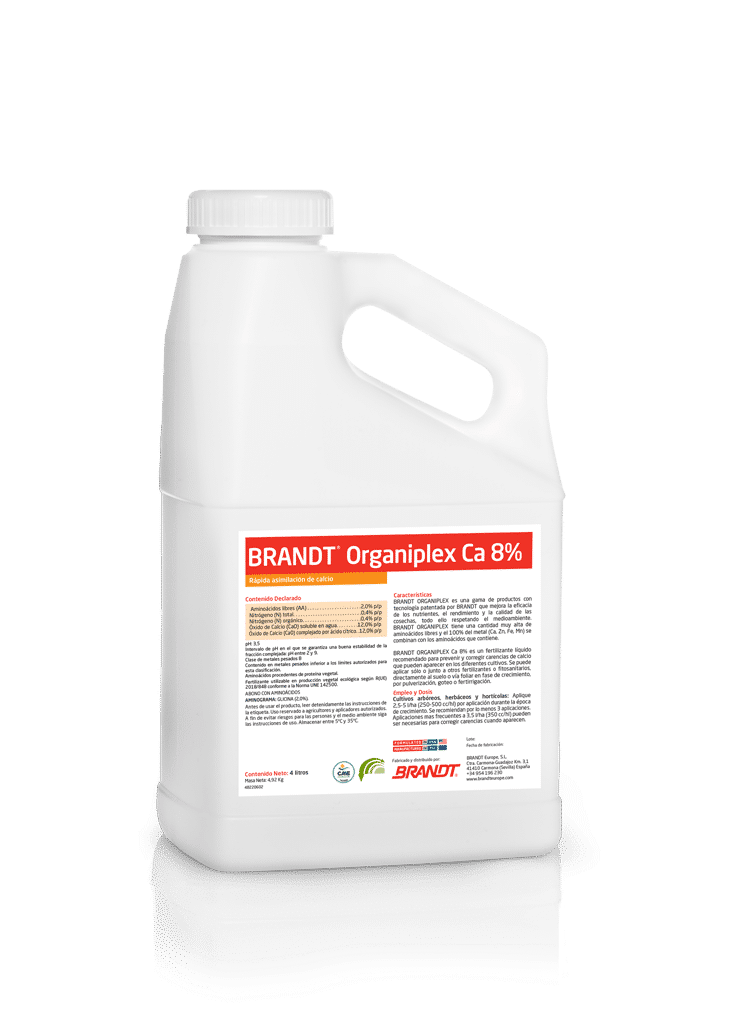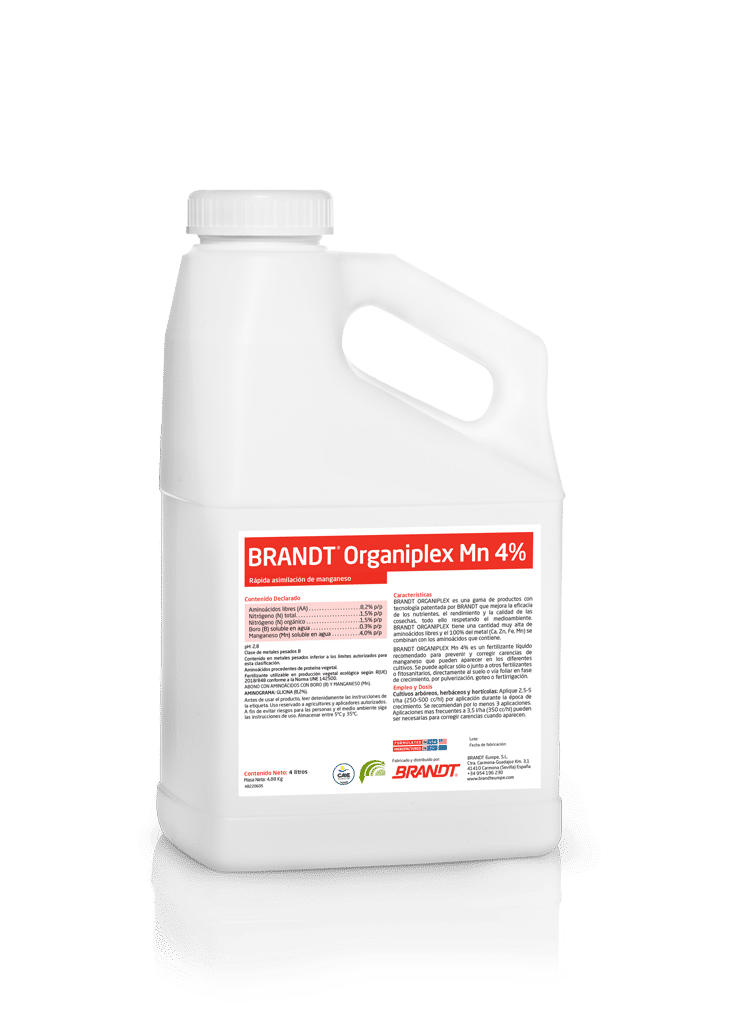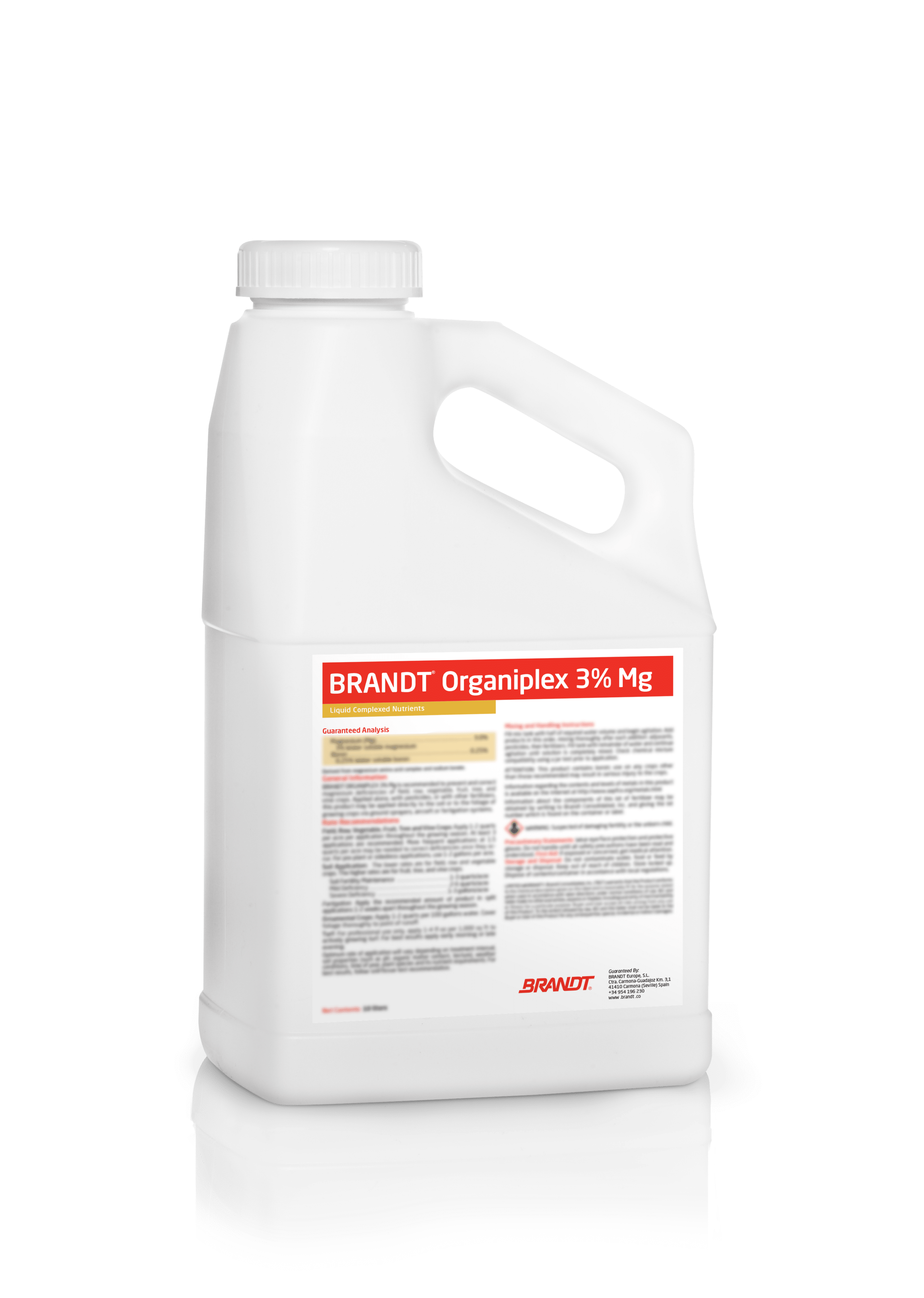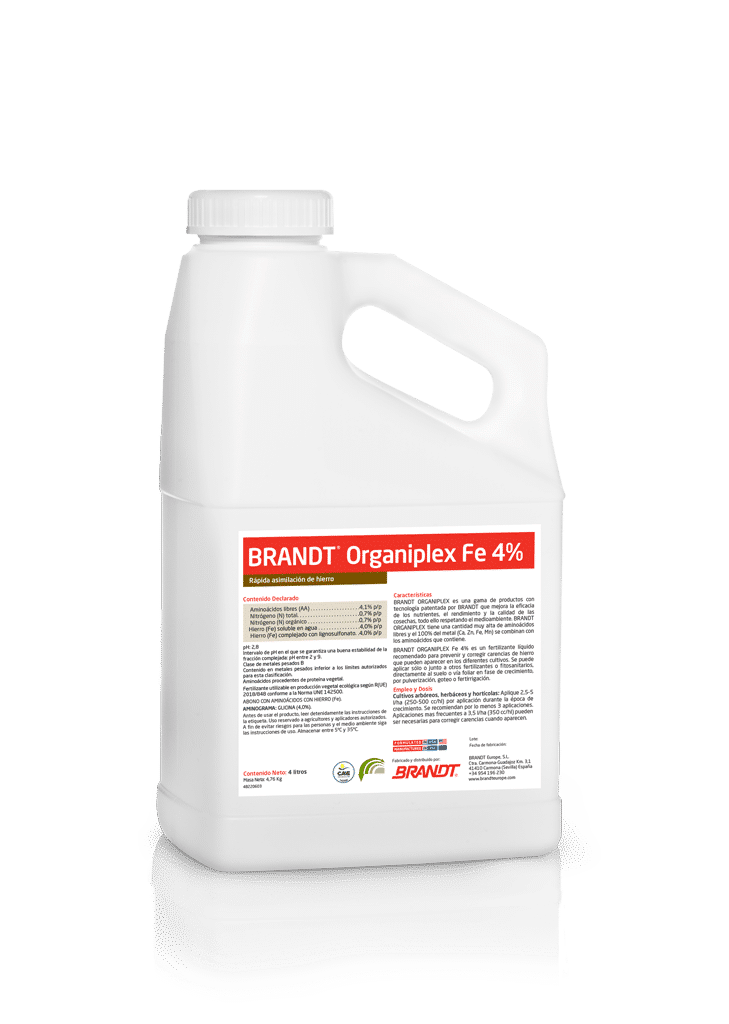BRANDT® Organiplex® Zn
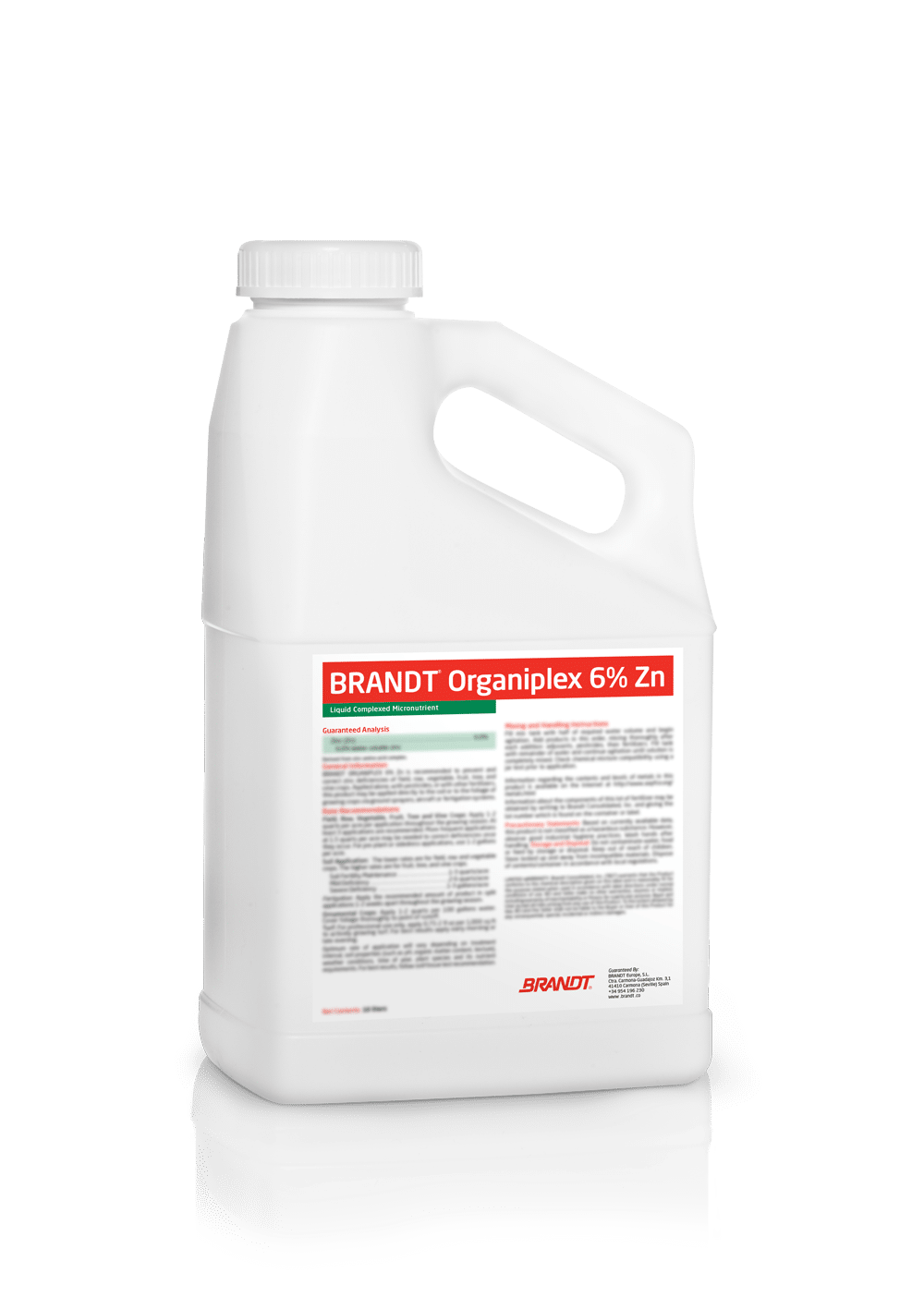
BRANDT® Organiplex® Zn is an organic zinc-rich nutritional supplement developed from zinc amino acid complexes.
BRANDT Organiplex® 6% Zn is recommended to prevent and correct zinc deficiencies of field, row, vegetable, fruit, tree, and vine crops. Applied alone, with pesticides, or with other fertilizers, this product may be applied directly to the soil or to the foliage of growing crops via ground sprayers, aircraft or fertigation systems
It is part of the products included in BRANDT® Organiplex®, based on amino acids that are applied to the leaves of crops, giving them the basic components they need for protein synthesis. These products also help to promote plant growth, especially in stressful environmental conditions, such as hydric and saline stress. The application of an amino acid supplements can also increase synthesis and chlorophyll content.
In addition, the nutritional supplements in this organic line have a concentration of glycine combined with a variety of nutrients selected to meet the specific needs of each crop.
- Advantages
- Crops
- Applications and use
- Composition
- Nutritional Composition
- Sheets
Advantages
- Excellent foliar mobility
- High concentration of amino acids
- Clean product with long term stability
- Use in organic farming
- 100% metal combined with amino acids
Crops
Chard, Chicory, Avocado, Garlic, Apricot, Artichoke, Alfalfa, Cotton, Almond, Celery, Blueberry, Rice, Hazelnut, Oats, Aubergine, Broccoli, Bulbs and fodder roots, Pumpkin, Lamb's lettuce, Persimmon, Chestnut, Barley, Onion, Rye, Cherry, Grass, Shallot, Custard apple, Plum, Carnation, Chinese cabbage, Brussels sprouts, Cauliflower, Rape, Endive, Asparagus, Spinach, Raspberry, Strawberry, Chickpea, Sunflower, Gramineae, Pomegranate, Gooseberry, Pea, Fava bean, Ornamental herb, Herbs, Fig, Prickly pear, Grain bean, Green bean, Kiwi, Lettuce, Fodder legumes, Ornamental woody, Lentil, Lime, Flax, Hops, Maize, Mandarin, Mango, Apple, Peach, Melon, Quince, Orange, Narcissus, Nectarine, Loquat, Walnut, Olive, Ornamental Palm, Papaya, Potato, Cucumber, Pear, Persimmon, Pepper, Pineapple, Pistachio, Banana, Grapefruit, Leek, Radish, Sugar beet, Beetroot, Cabbage, Salsify, Watermelon, Soy, Tobacco, Tomato, Wheat, Triticale, Grapevines, Carrot
Applications and use
Field, Row, Vegetable, Fruit, Tree and Vine Crops:
Apply 0.5-1 L/ha per application throughout the growing season. At least 3 applications are recommended. More frequent applications at 3 L/ha may be needed to correct deficiencies once they occur. For pre-plant or sidedress applications, use 2-3 L/ha.
Soil Application:
The lower rates are for field, row and vegetable crops. The higher rates are for fruit, tree, and vine crops.
Soil Fertility Maintenance . . . . . . . . . . . . . . . . . . . . . 0.5-1.5 L/ha
Mild Deficiency . . . . . . . . . . . . . . . . . . . . . . . . . . . . . . . 1-3 L/ha
Severe Deficiency . . . . . . . . . . . . . . . . . . . . . . . . . . . 0.5-1.5 L/ha
Fertigation:
Apply the recommended amount of product in split applications 1-2 weeks apart throughout the growing season.
Ornamental Crops:
Apply 0.25-0.5 liters per 100 liters of water. Cover foliage thoroughly to point of runoff.
Turf:
For professional use only, apply 20-60 ml per 100 m2 to actively growing turf. For best results apply early morning or late evening.
Optimum rate of application will vary depending on treatment interval, soil properties (such as pH, organic matter content, texture), weather conditions, time of year, plant species and its nutrient requirements. For best results, follow soil/tissue test recommendation.
Composition
Zinc (Zn): 6.0% Water soluble zinc
Nutritional Composition
Zinc (Zn)
Sheets

